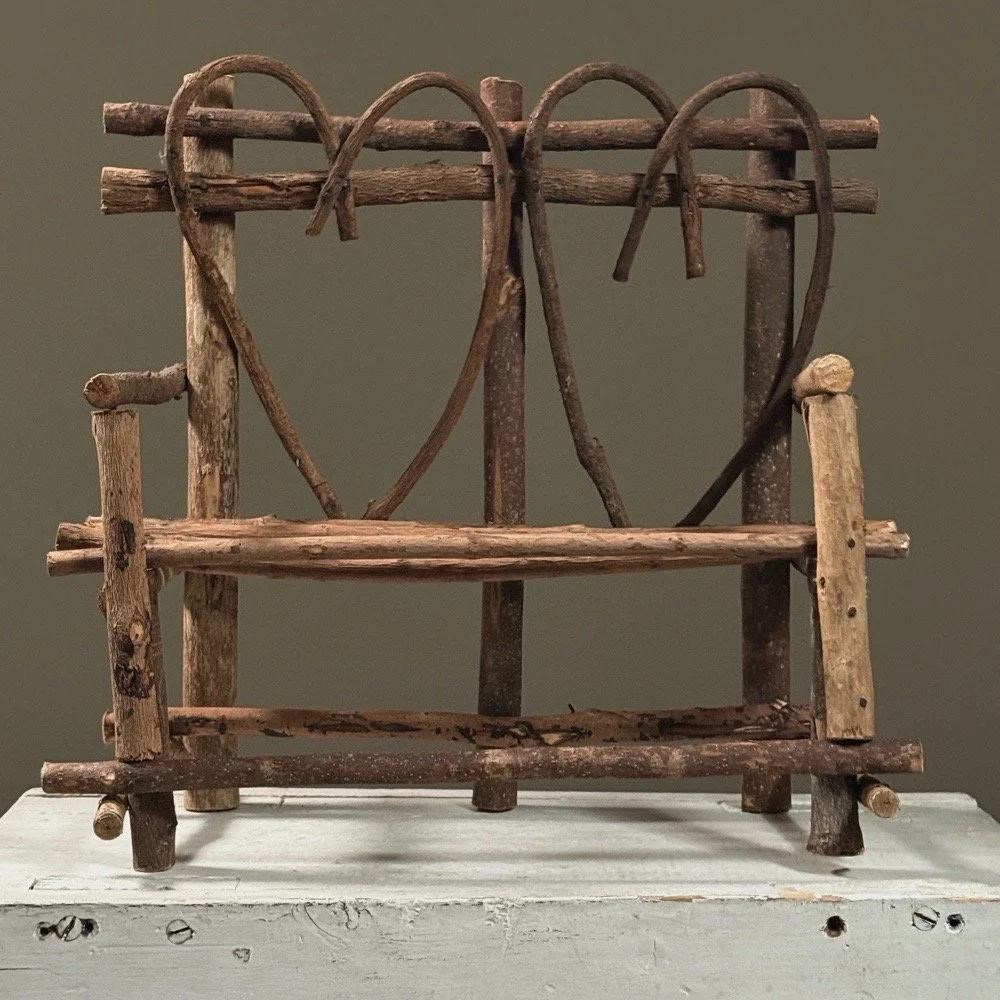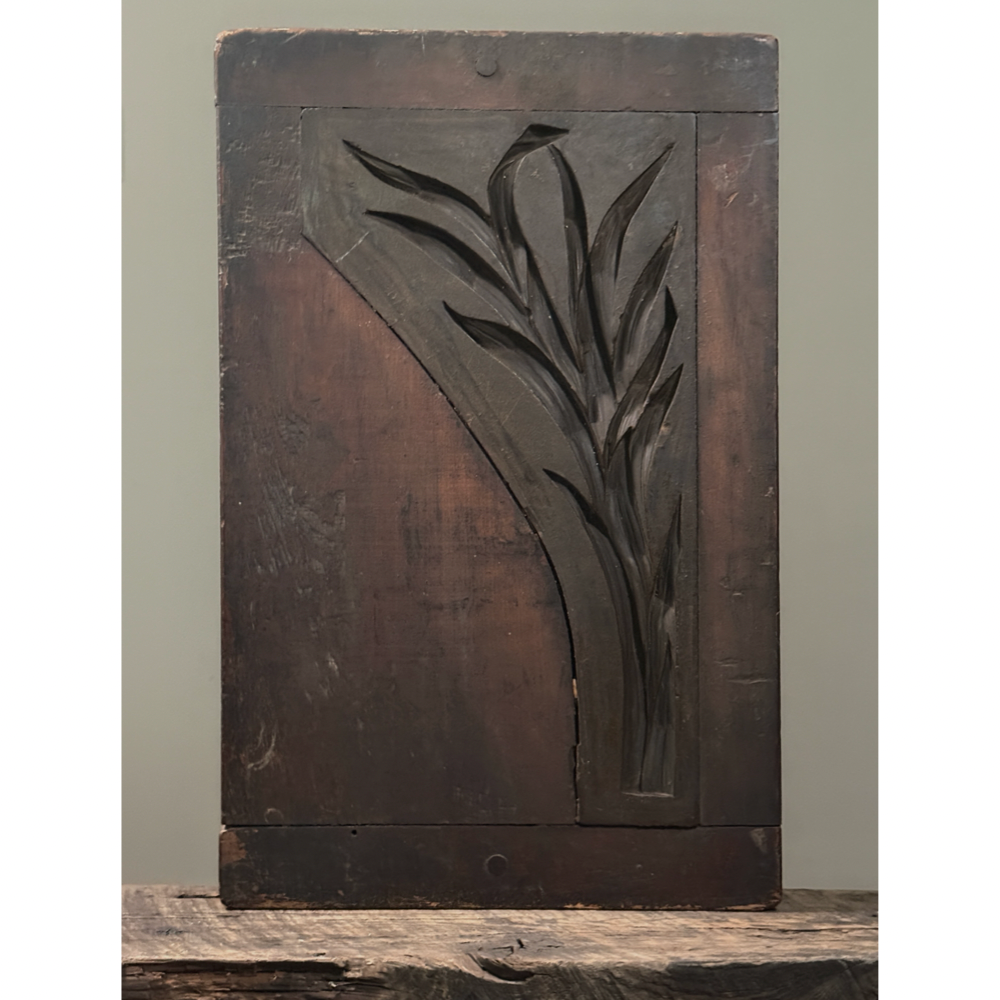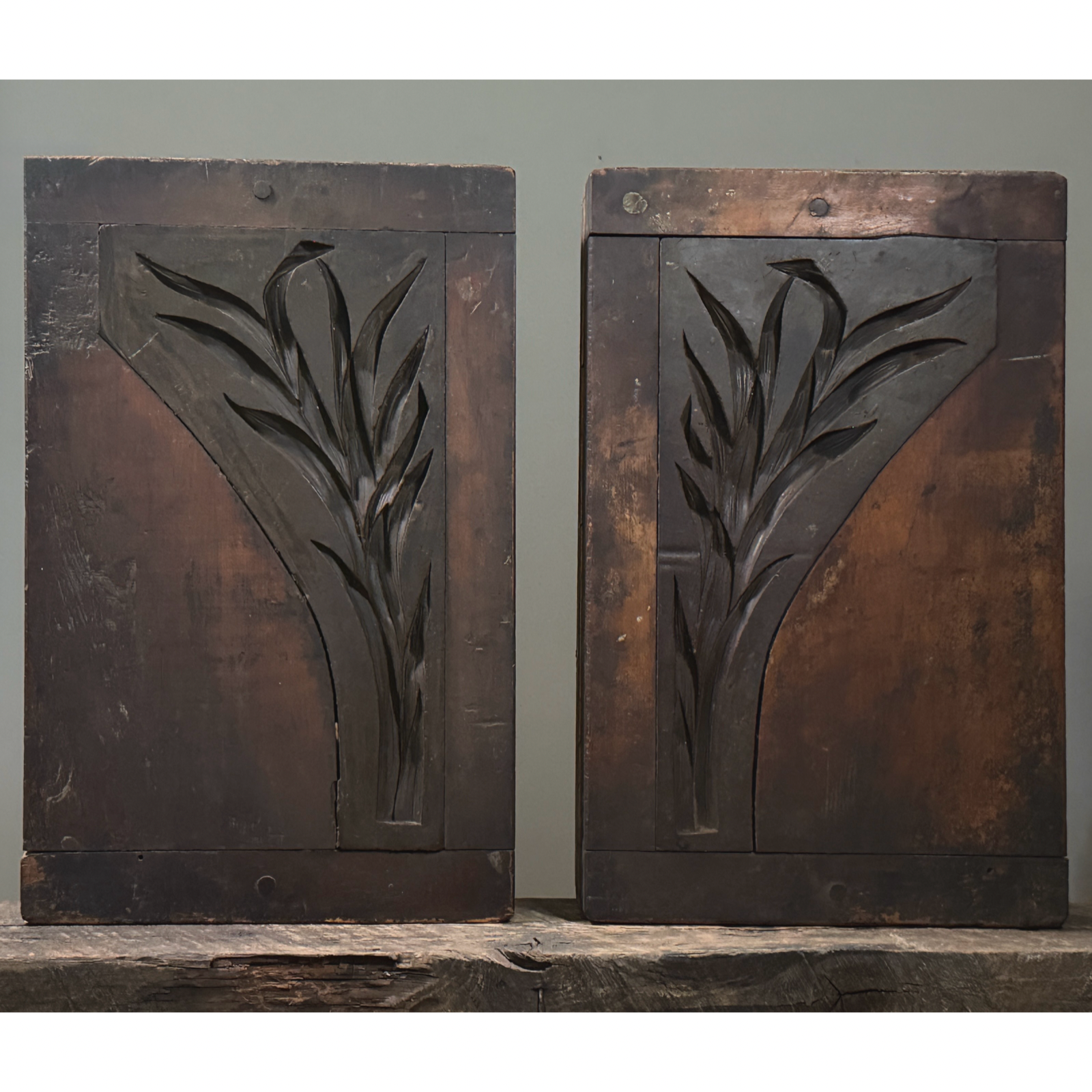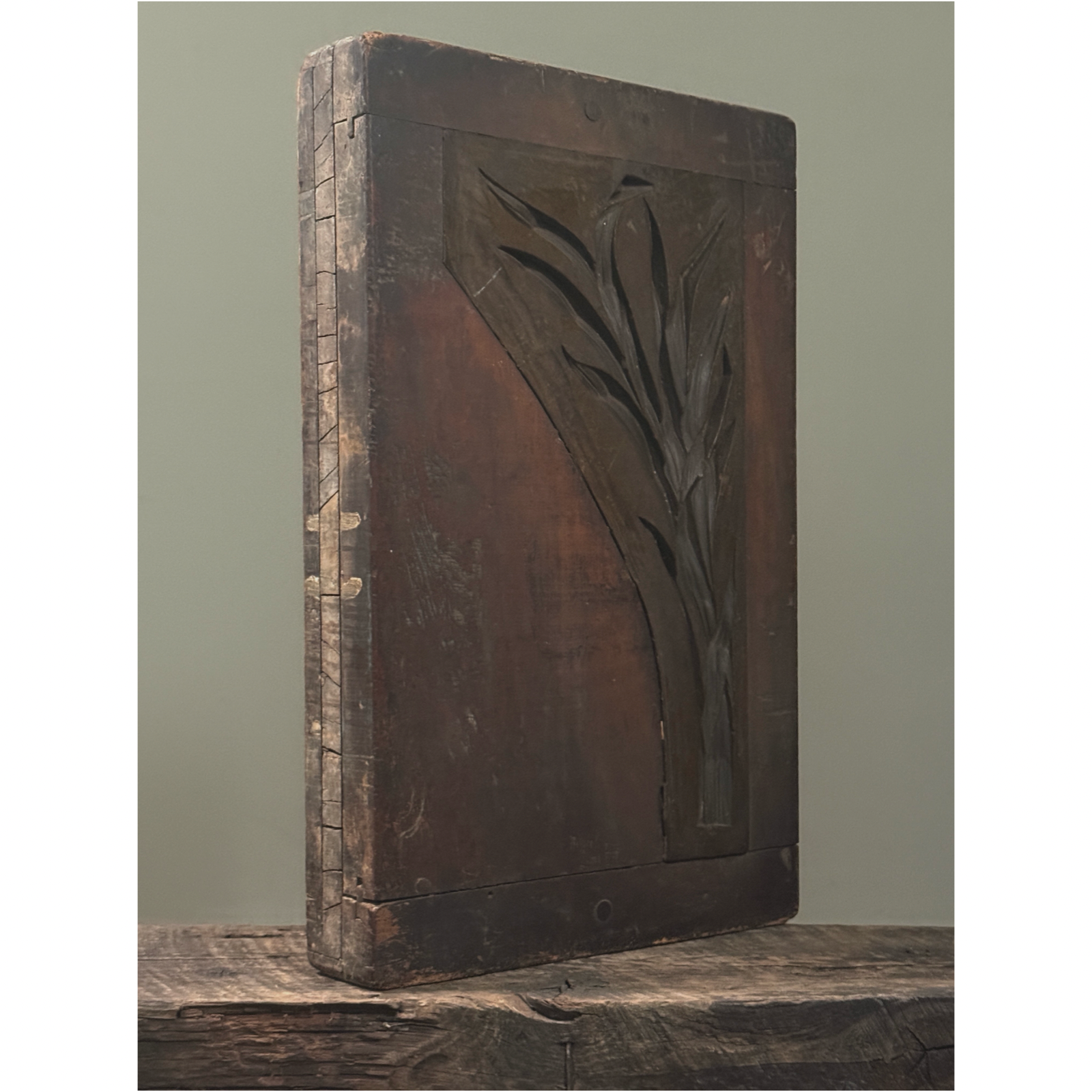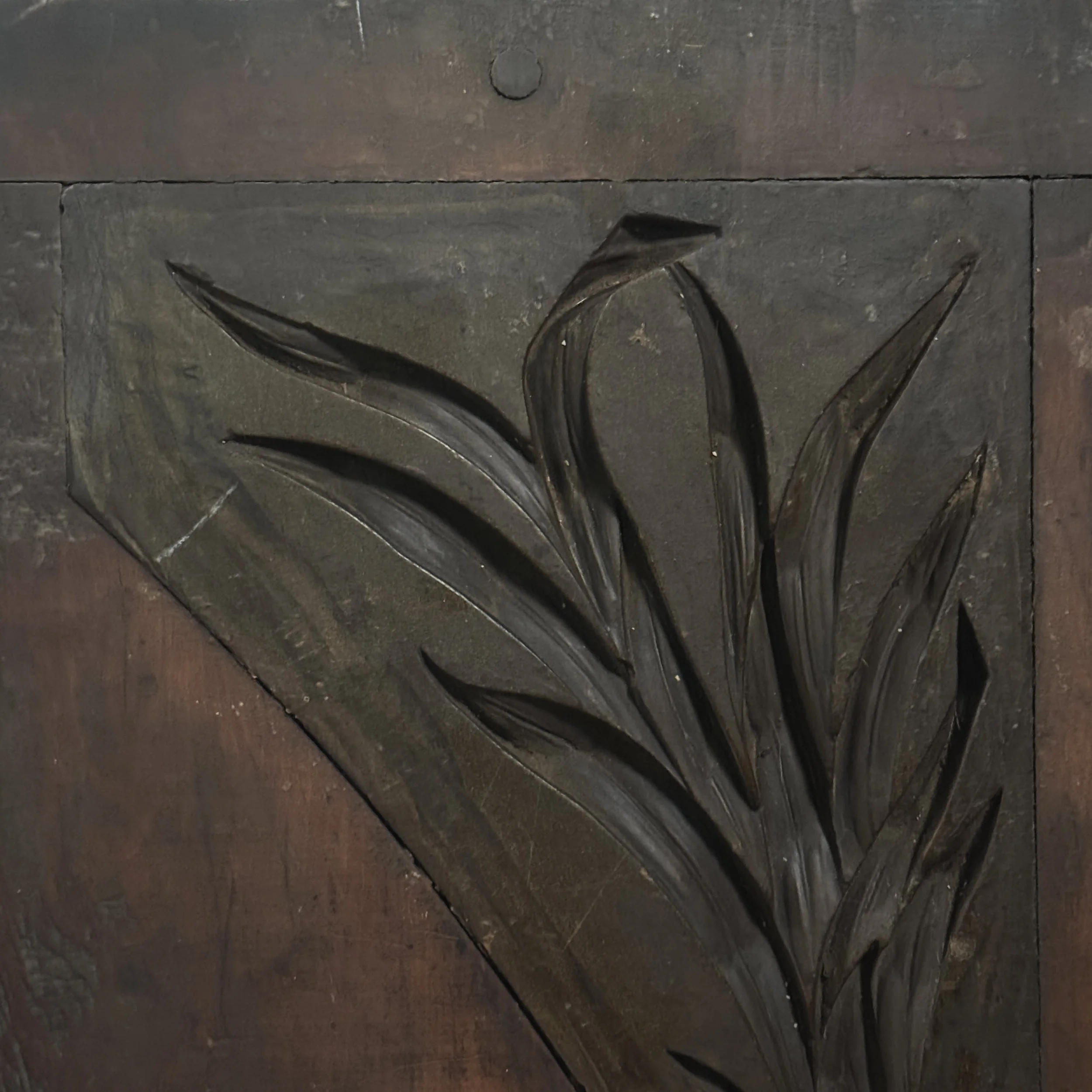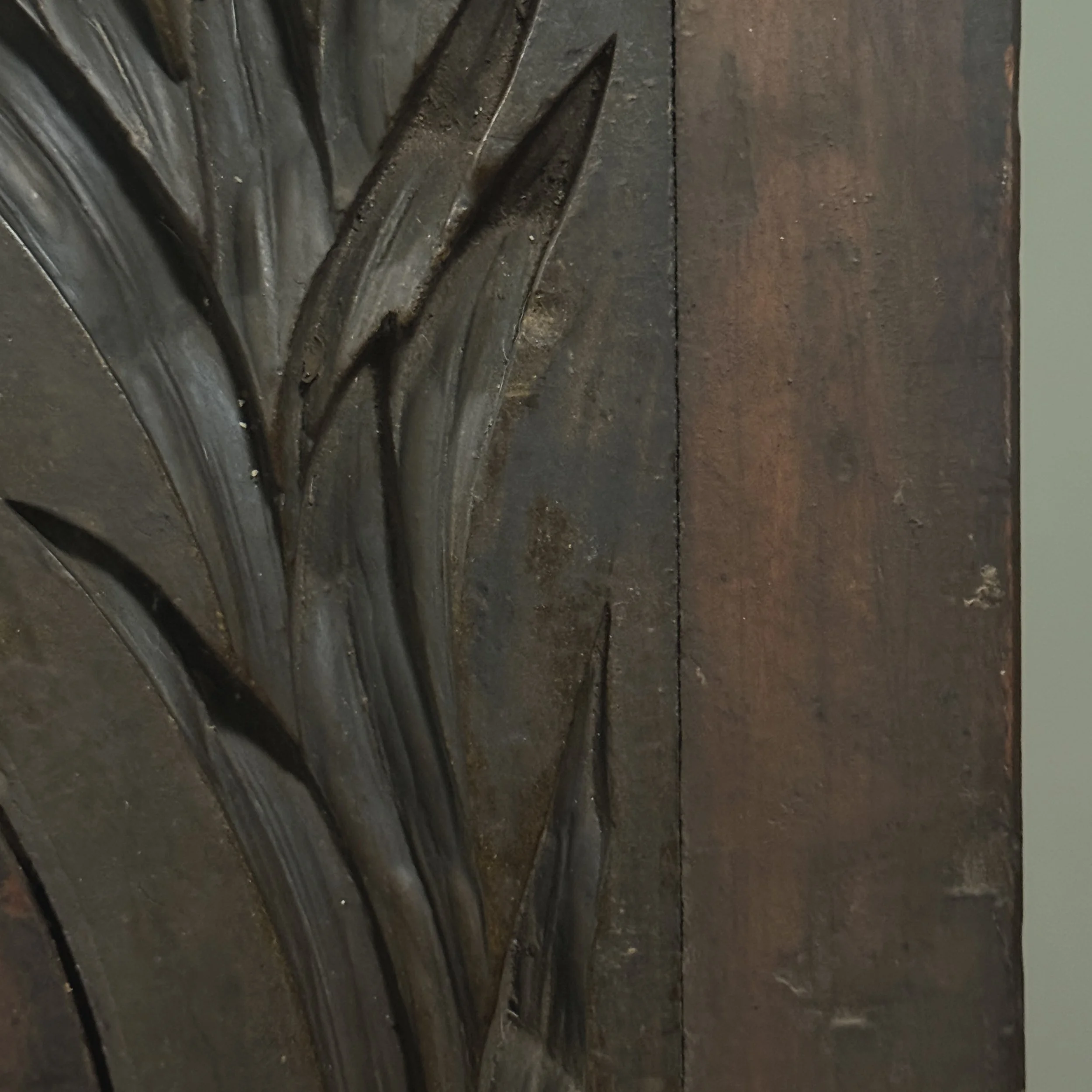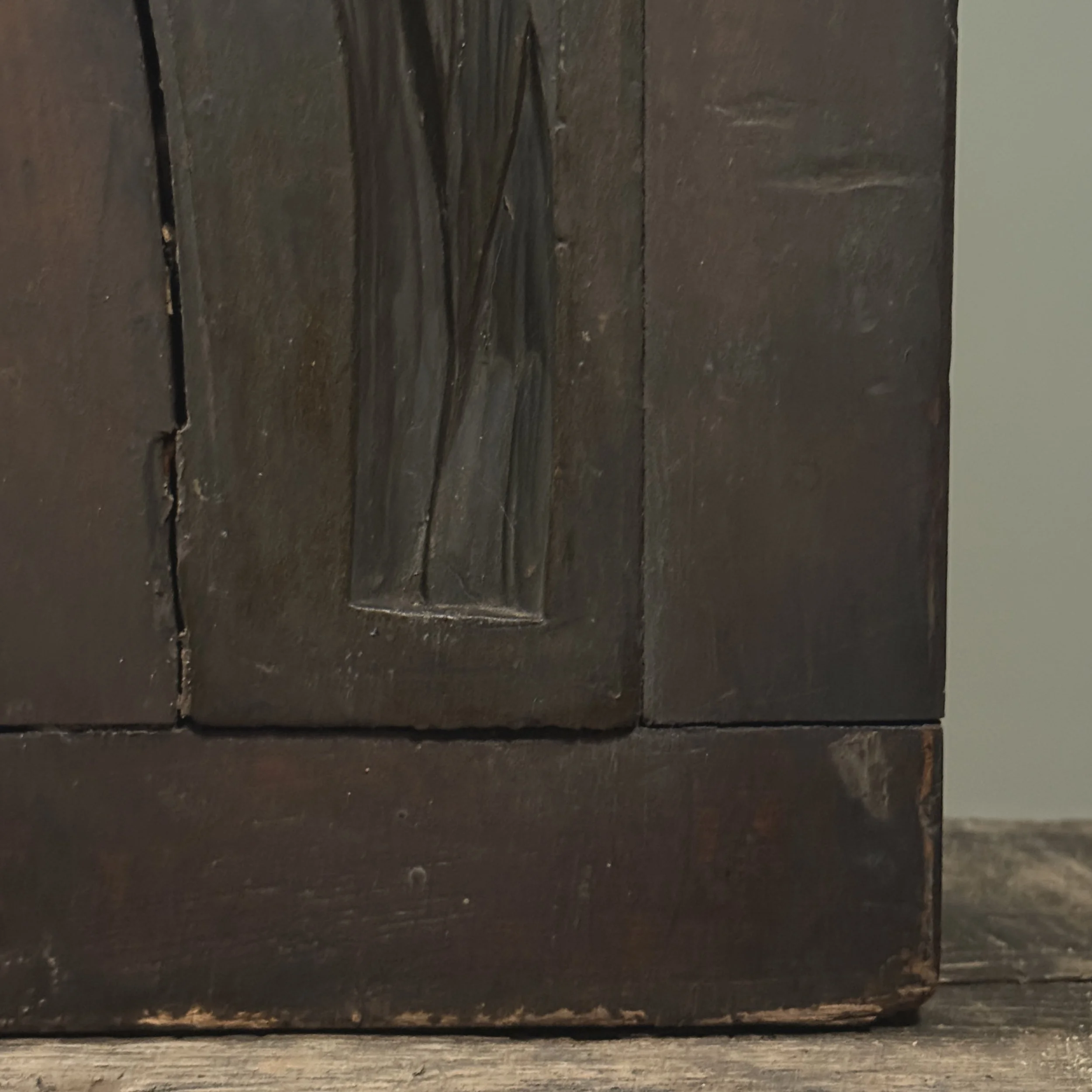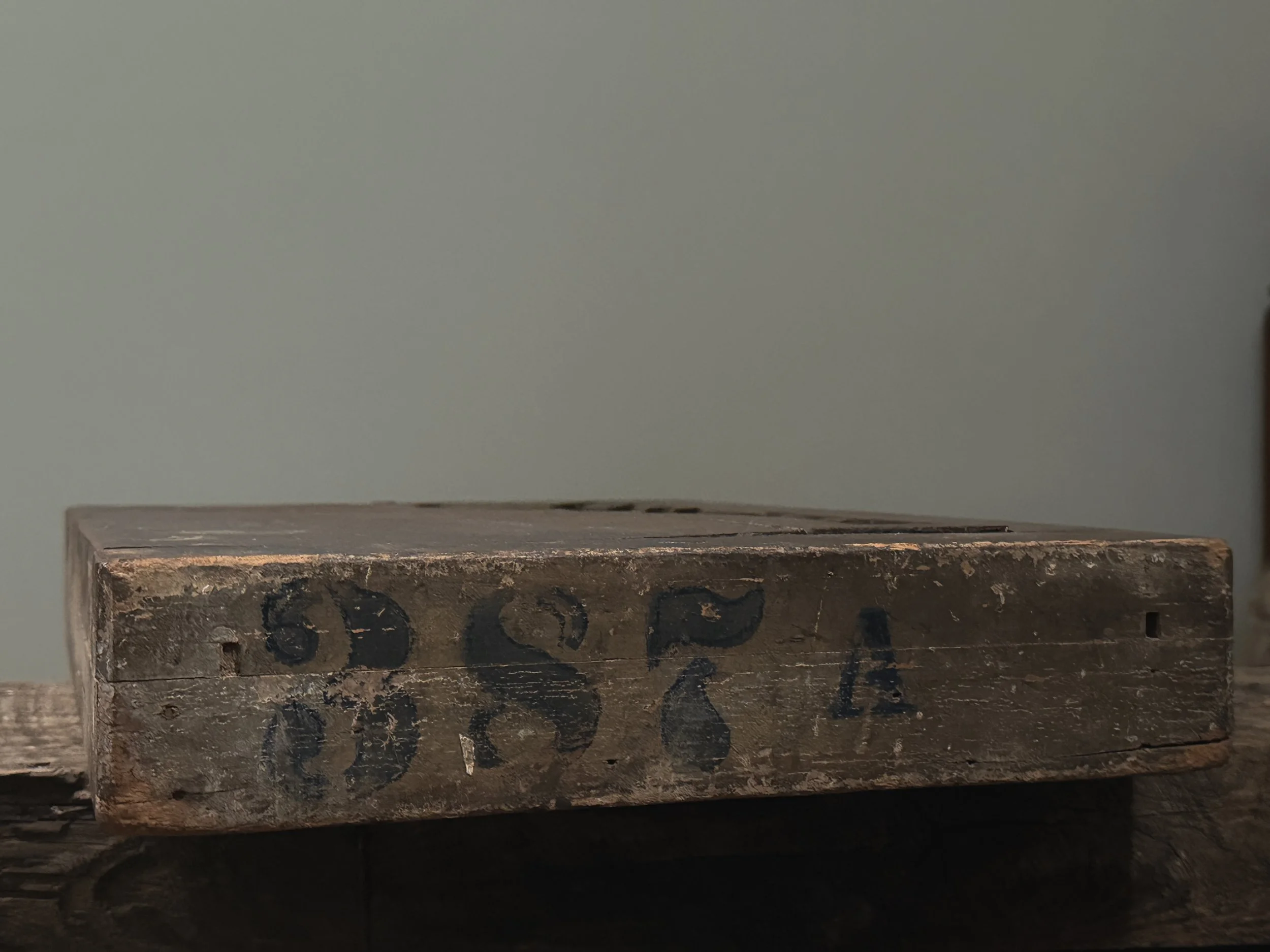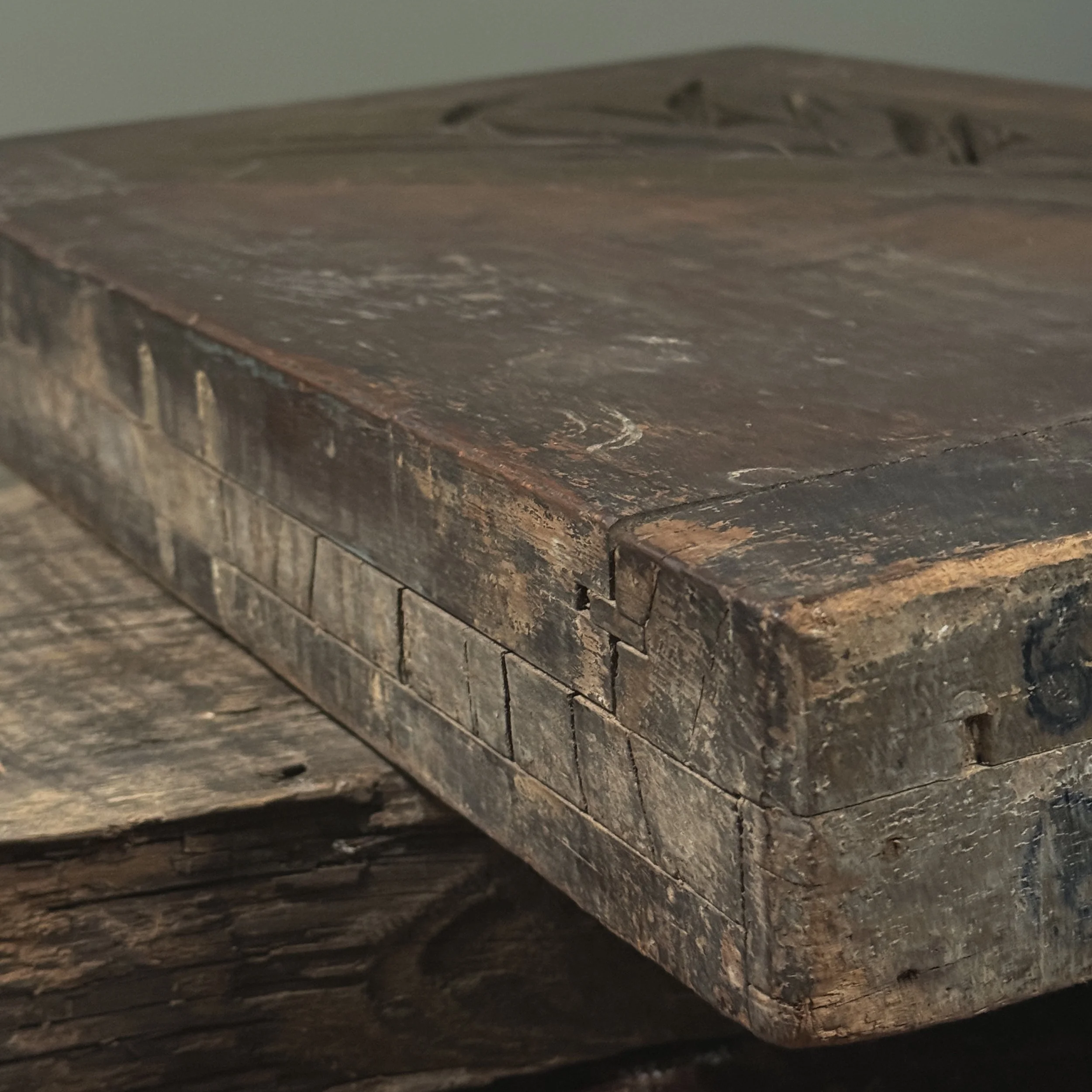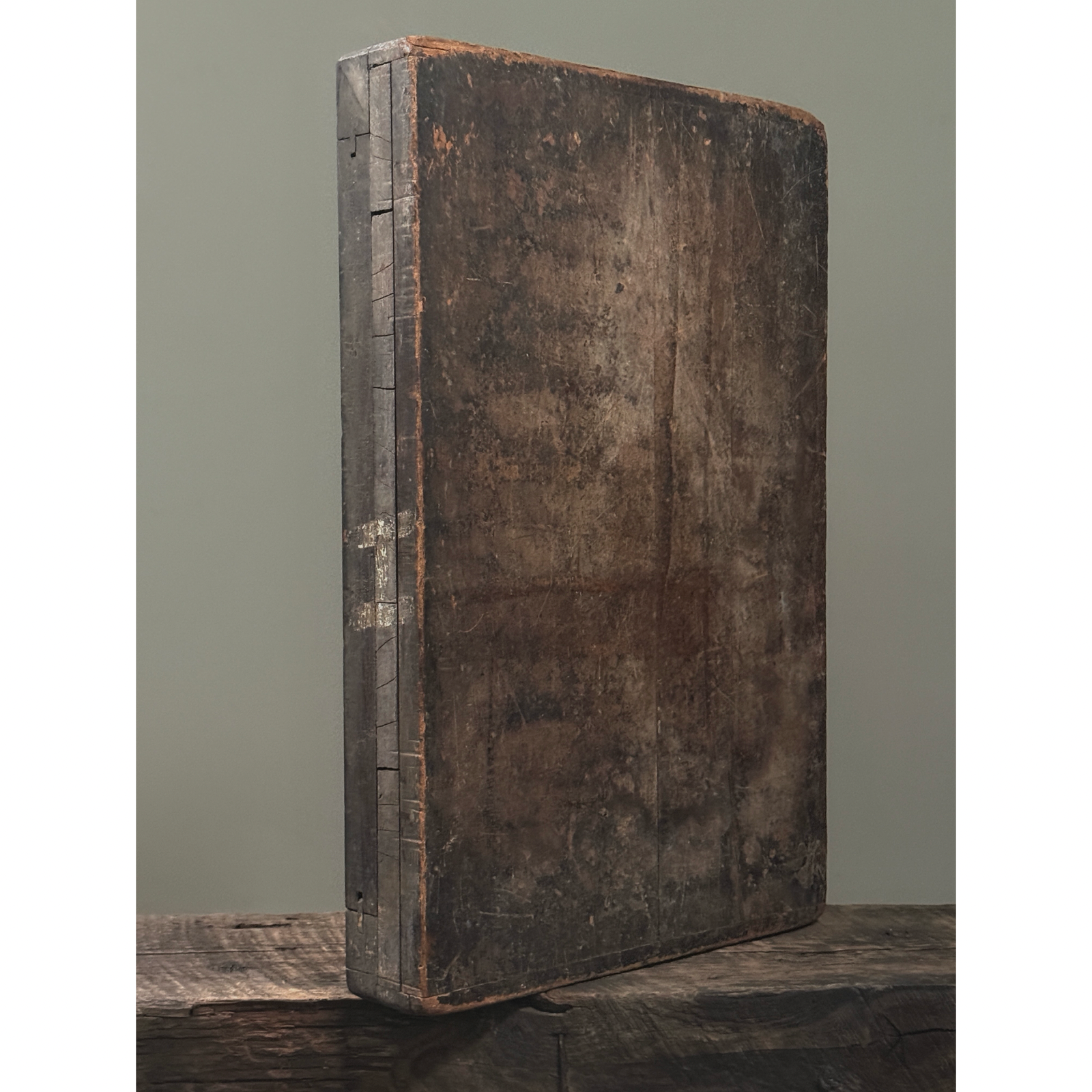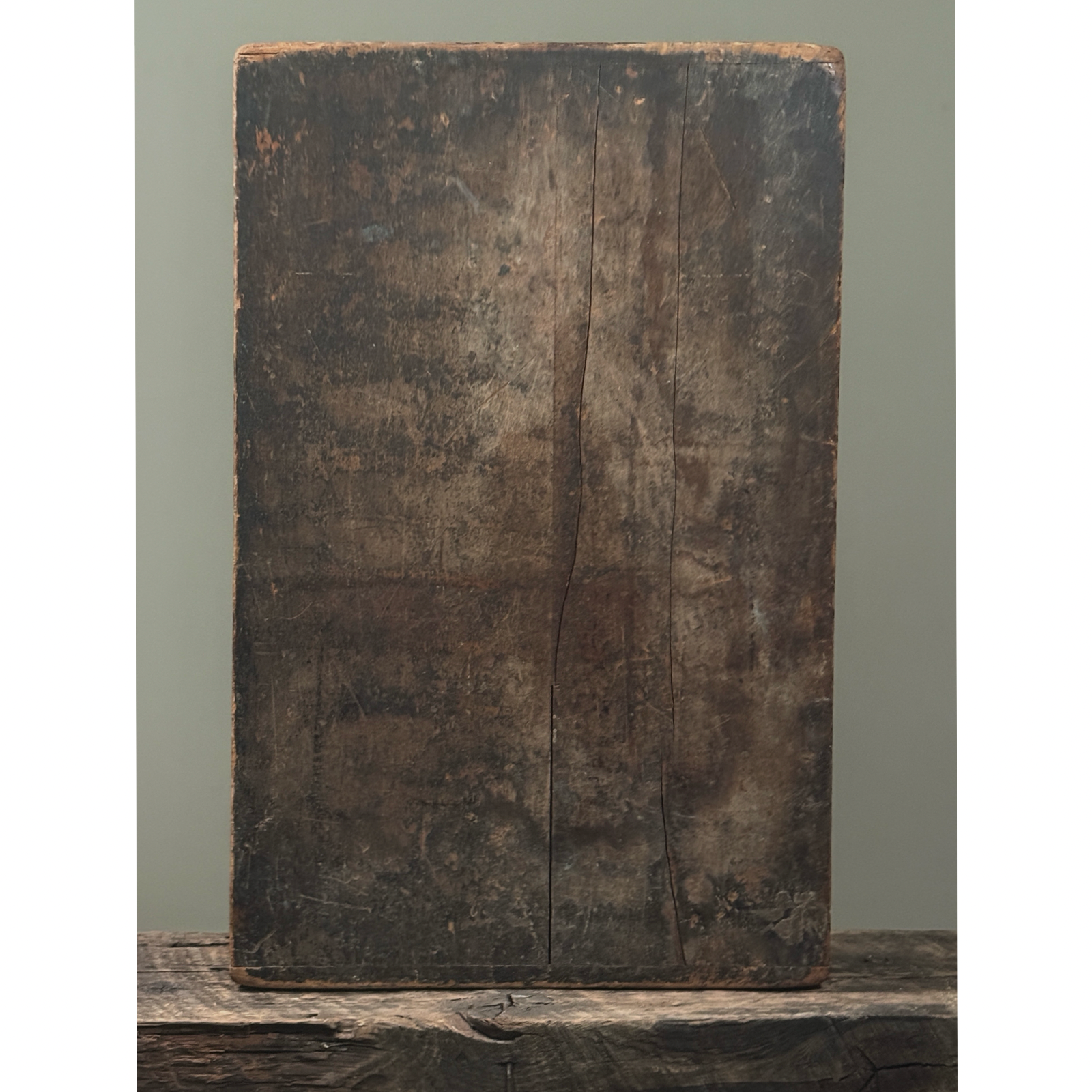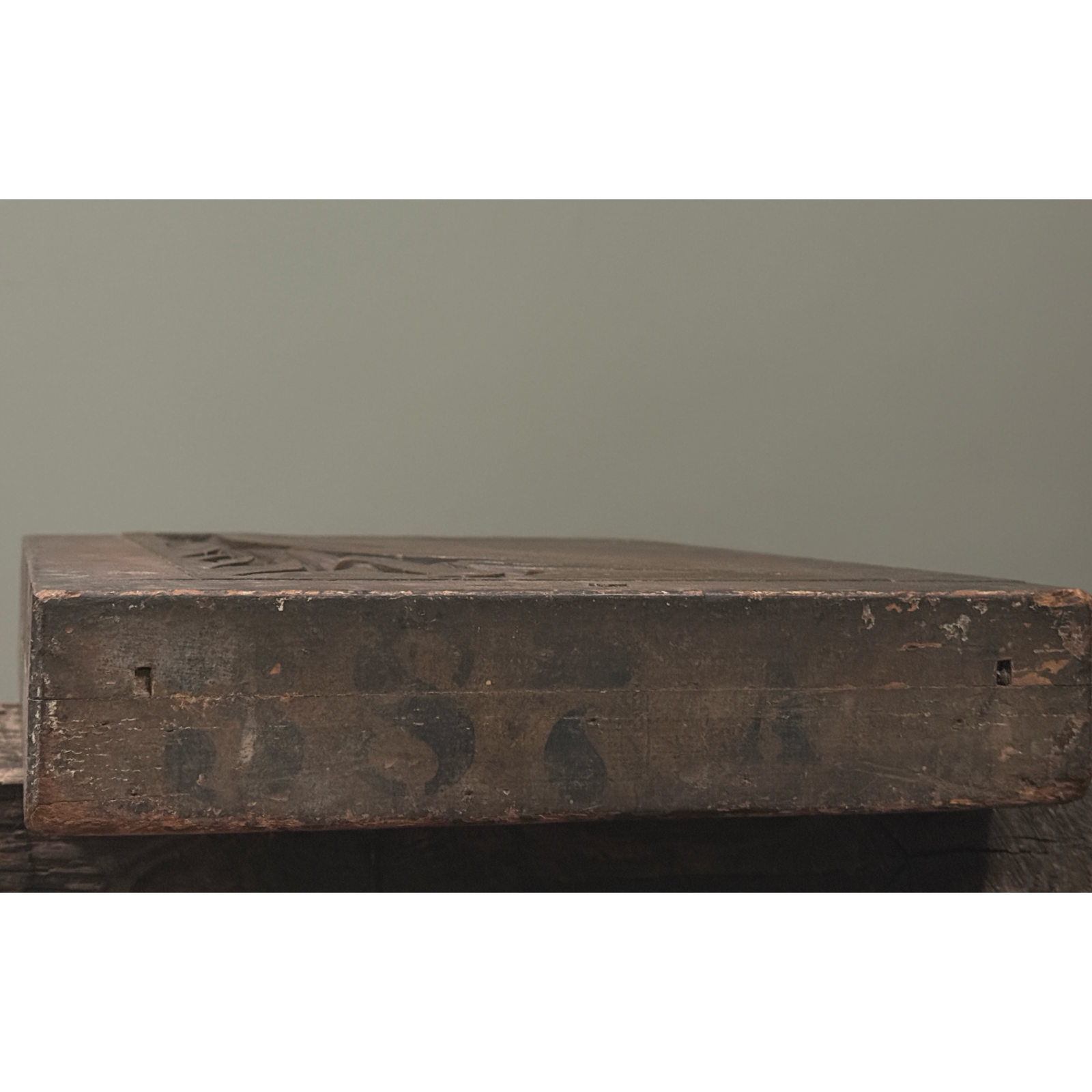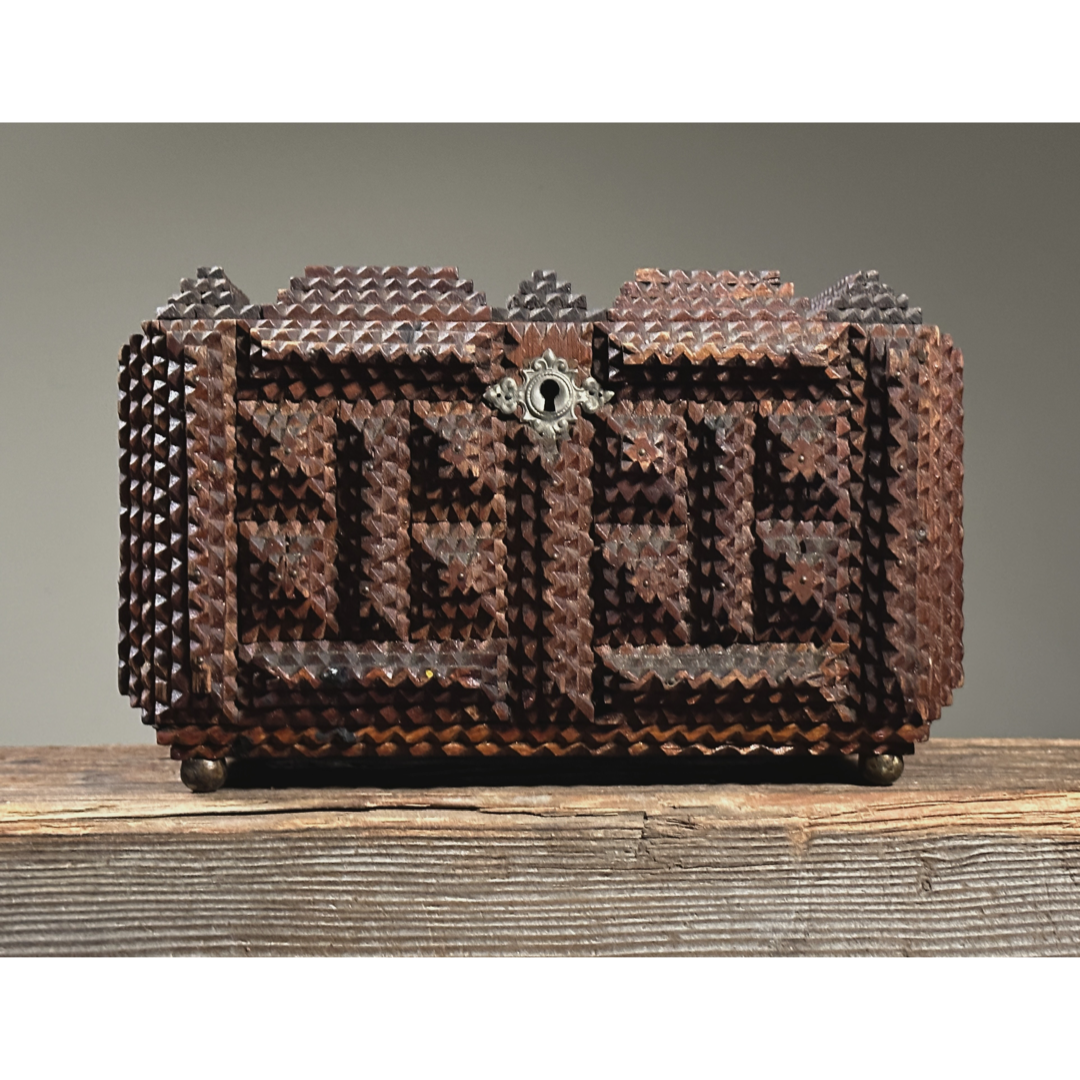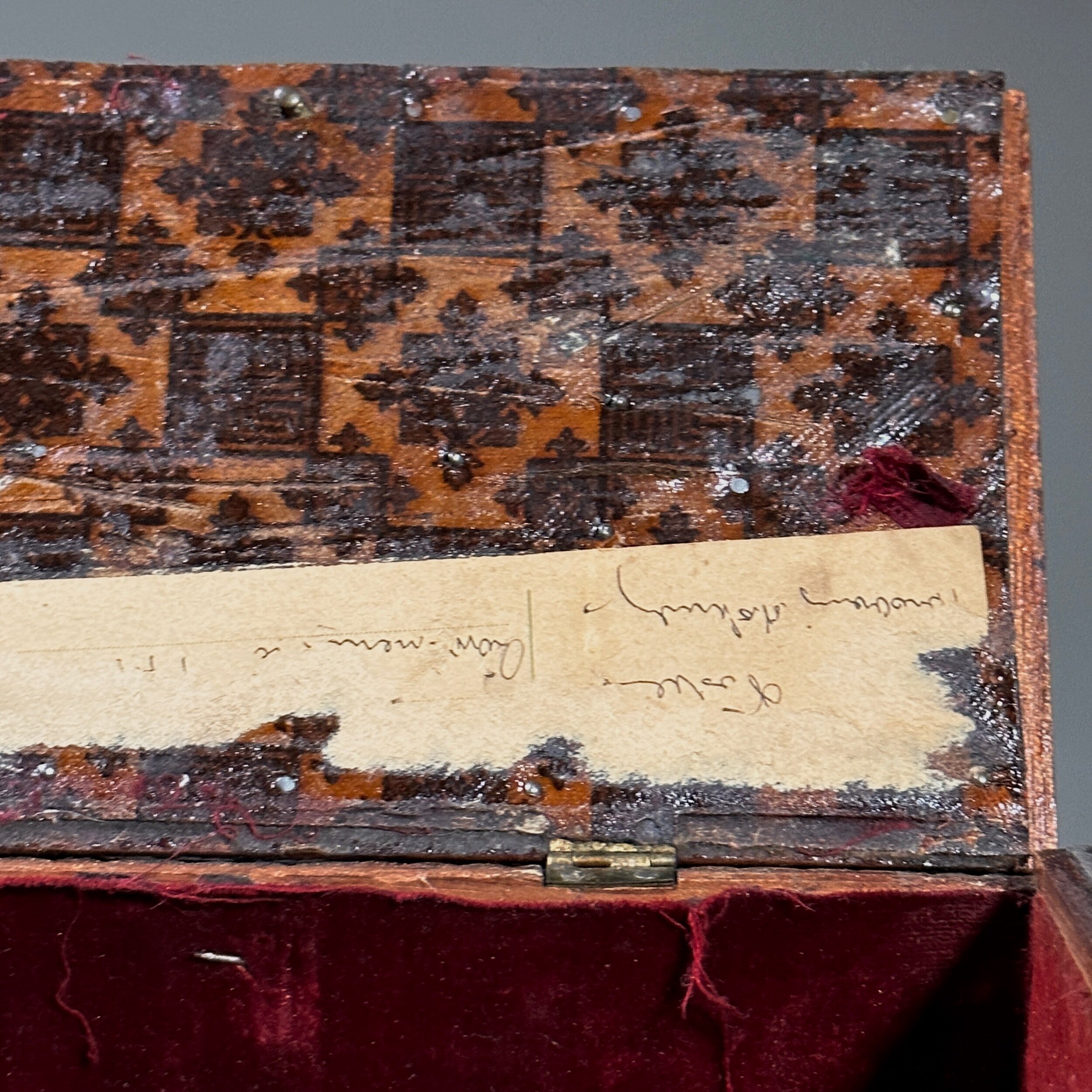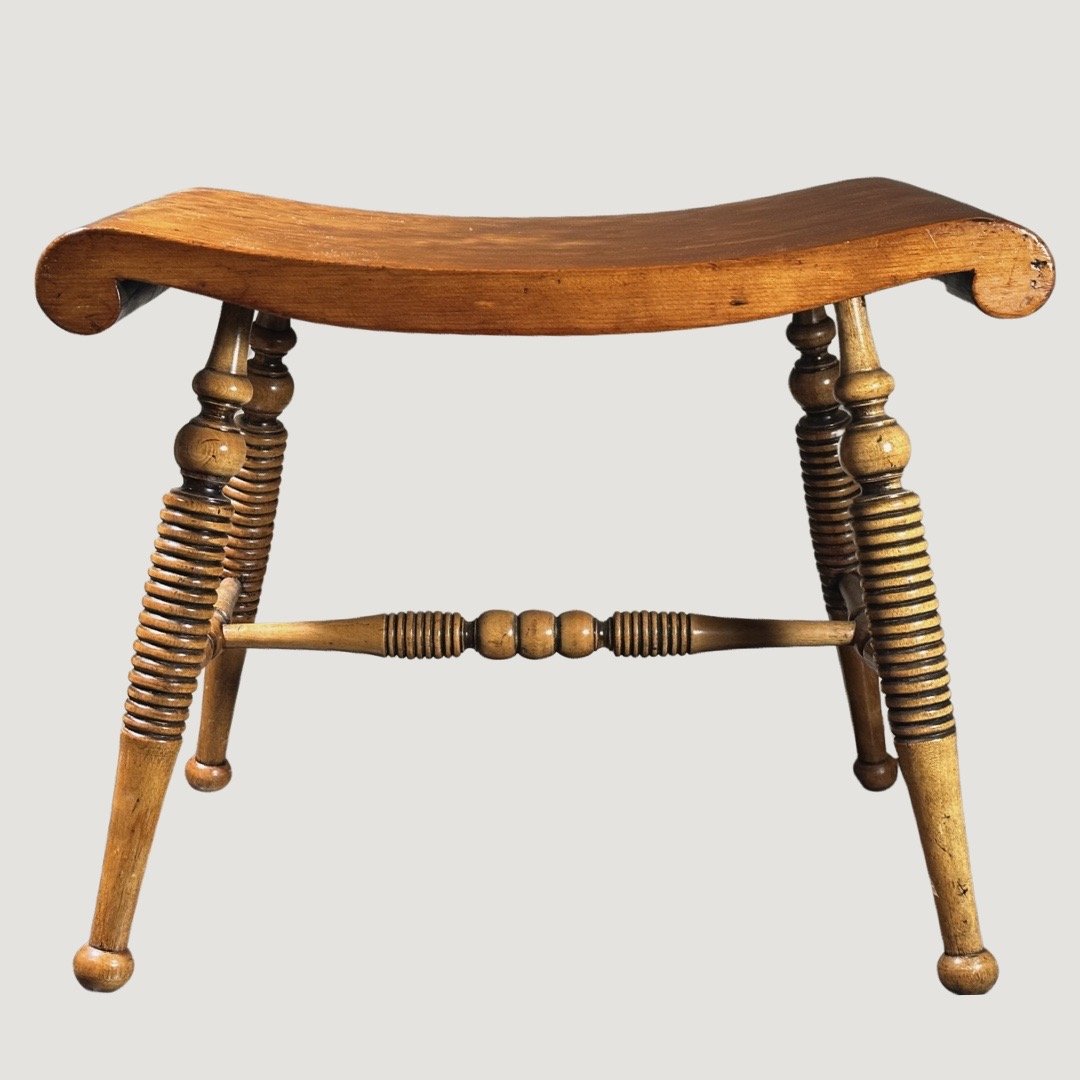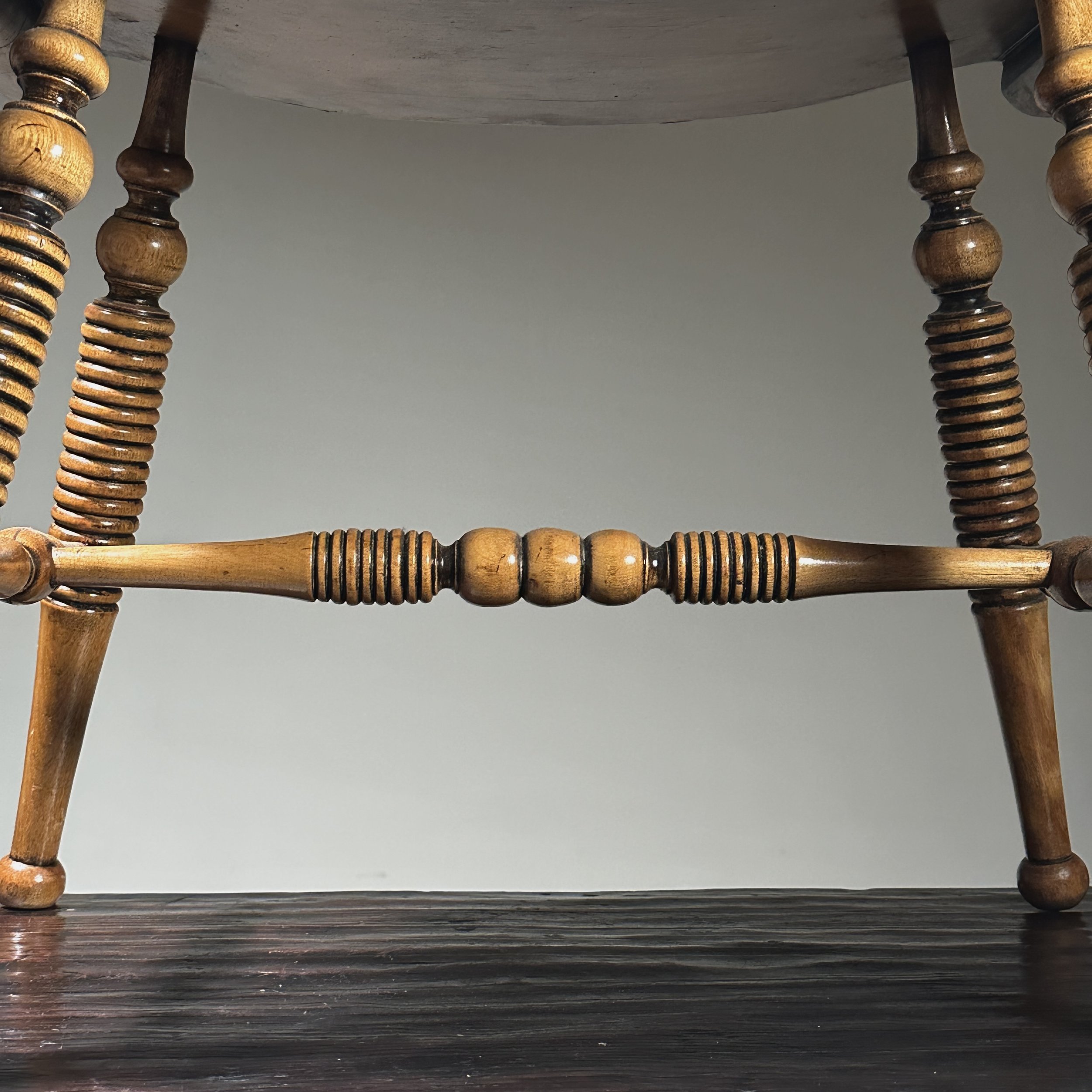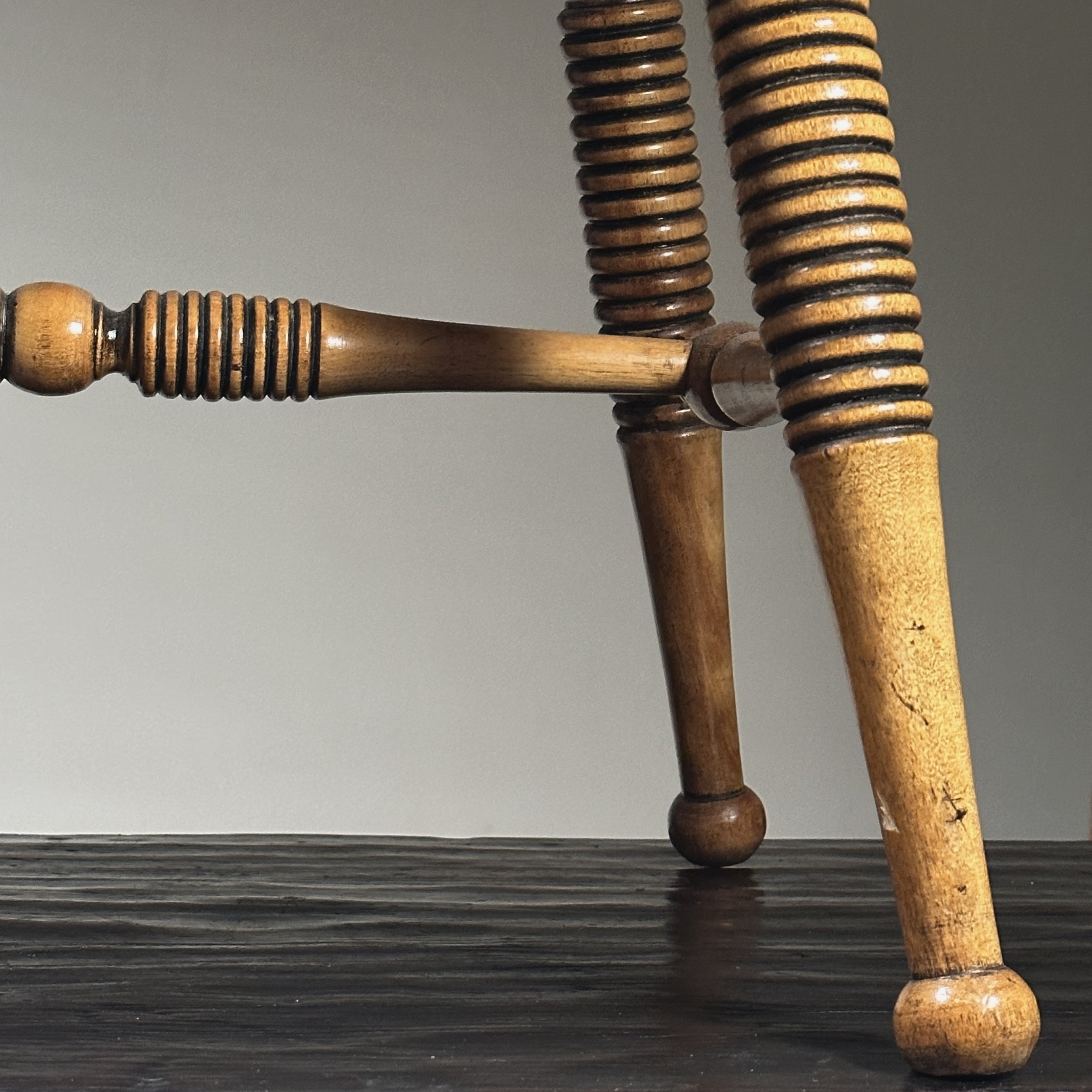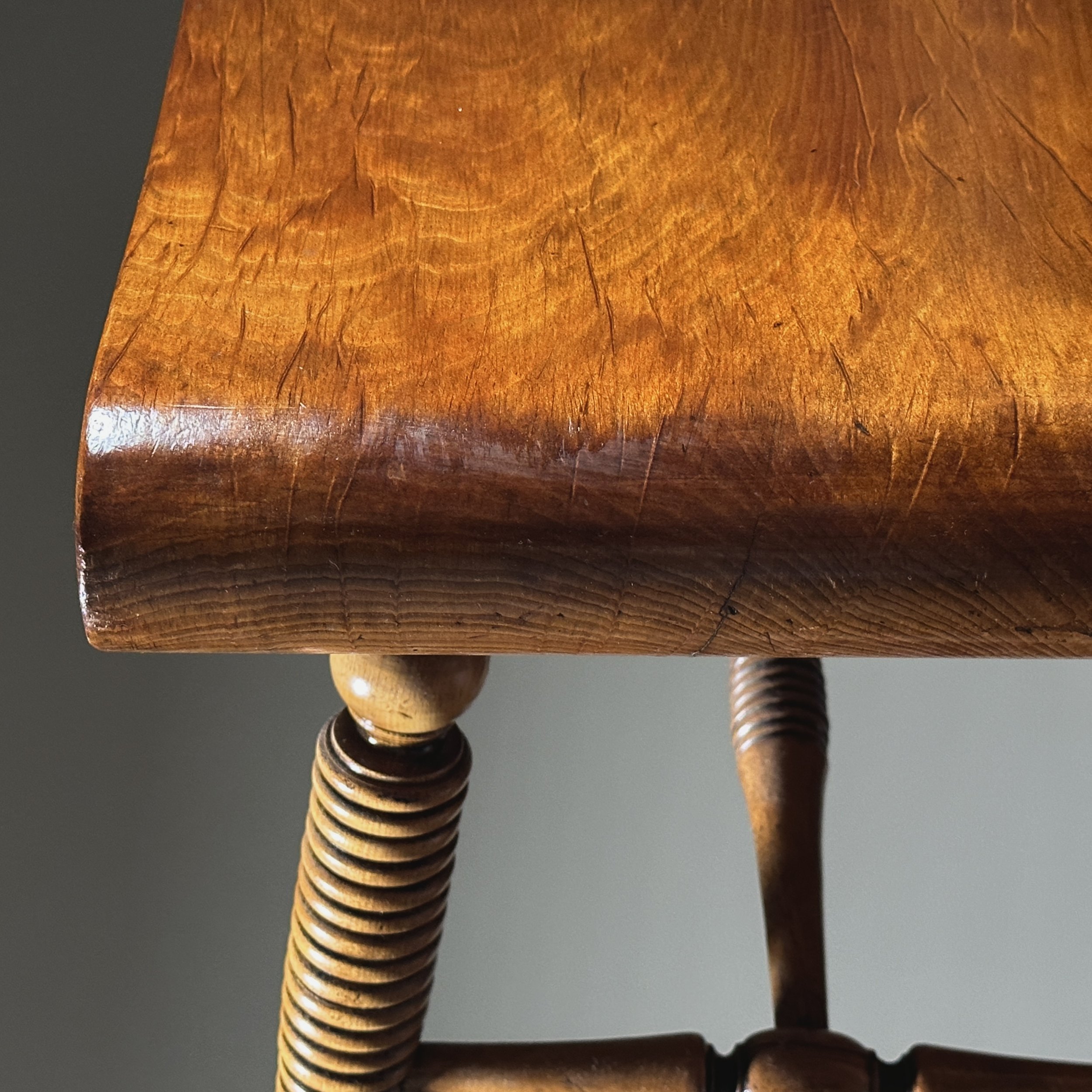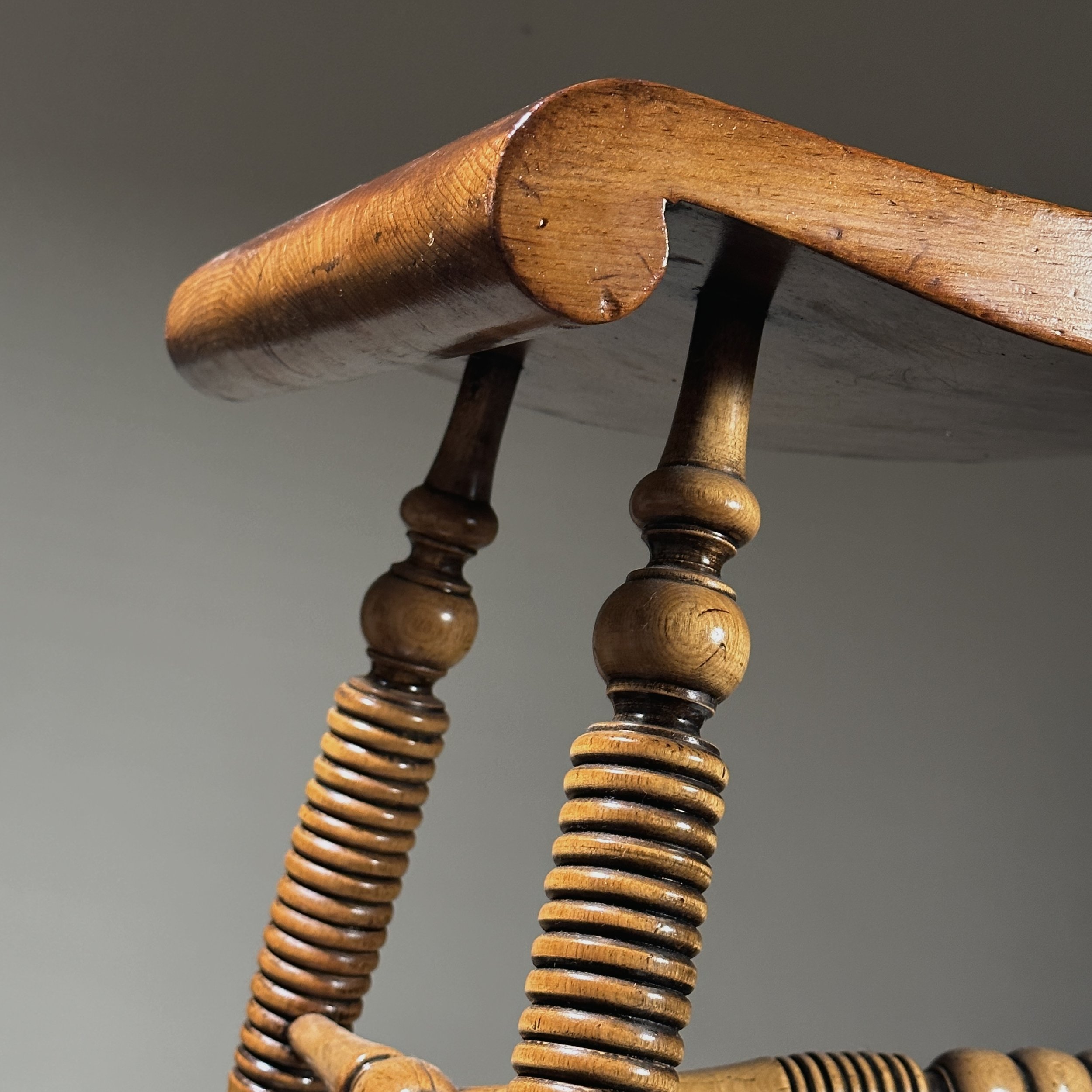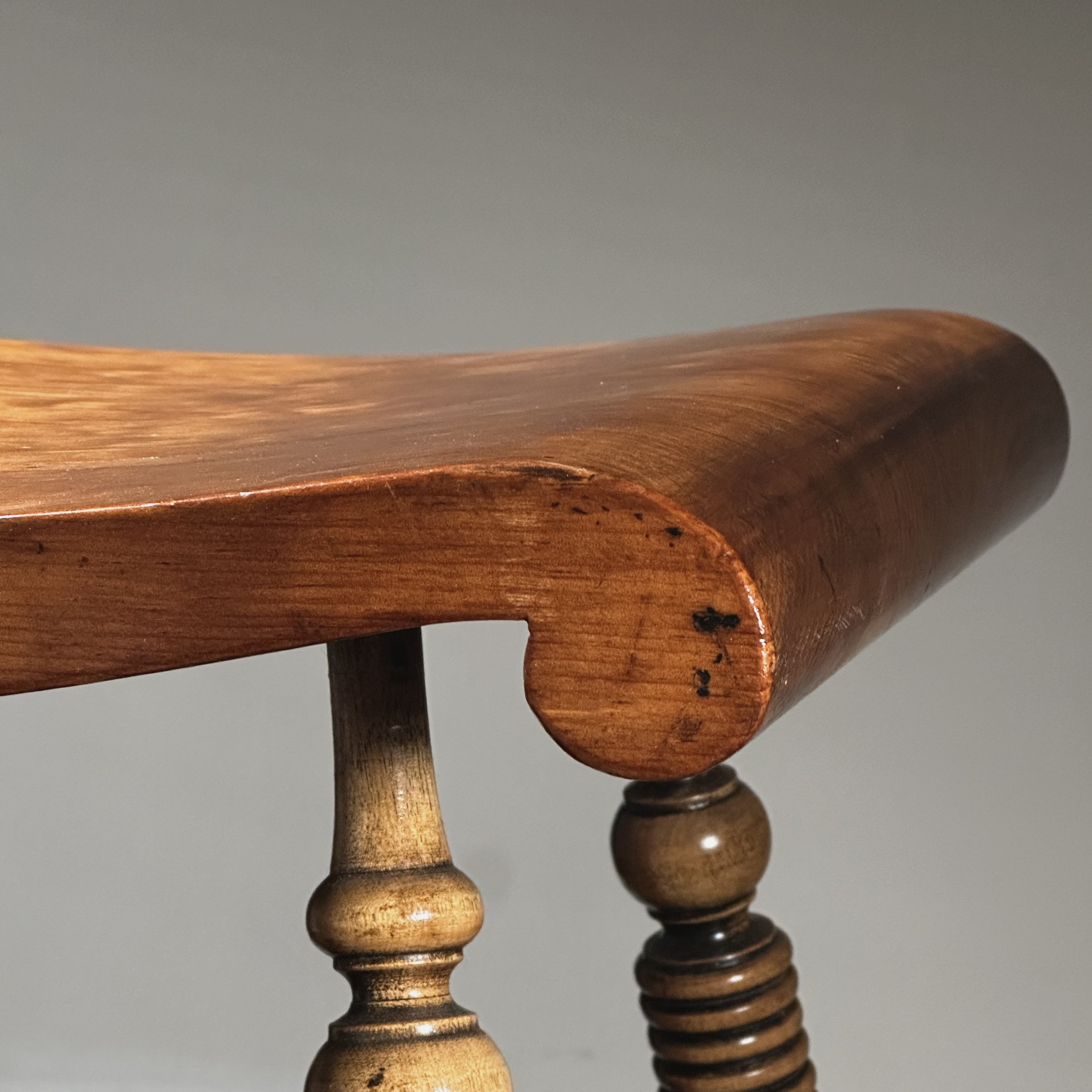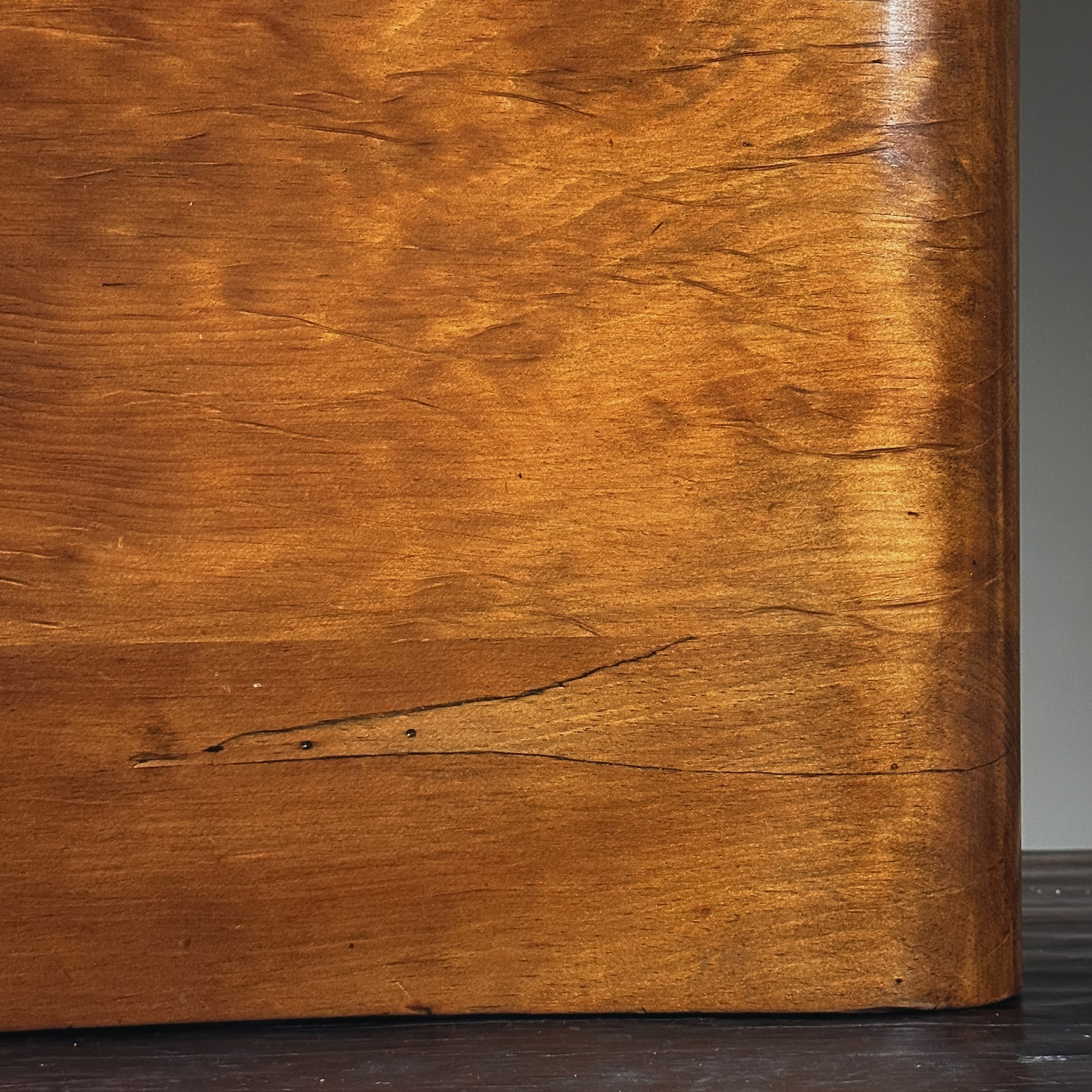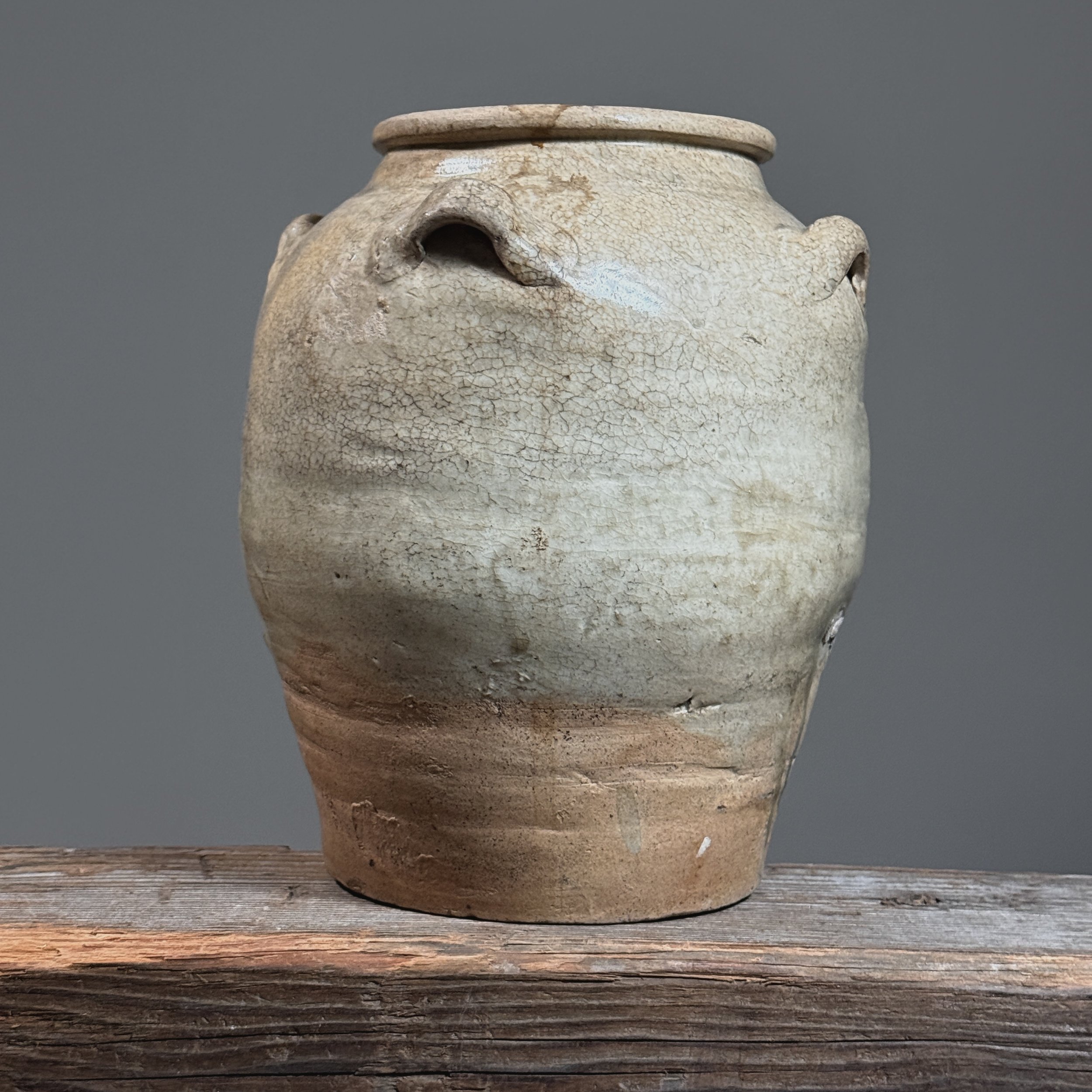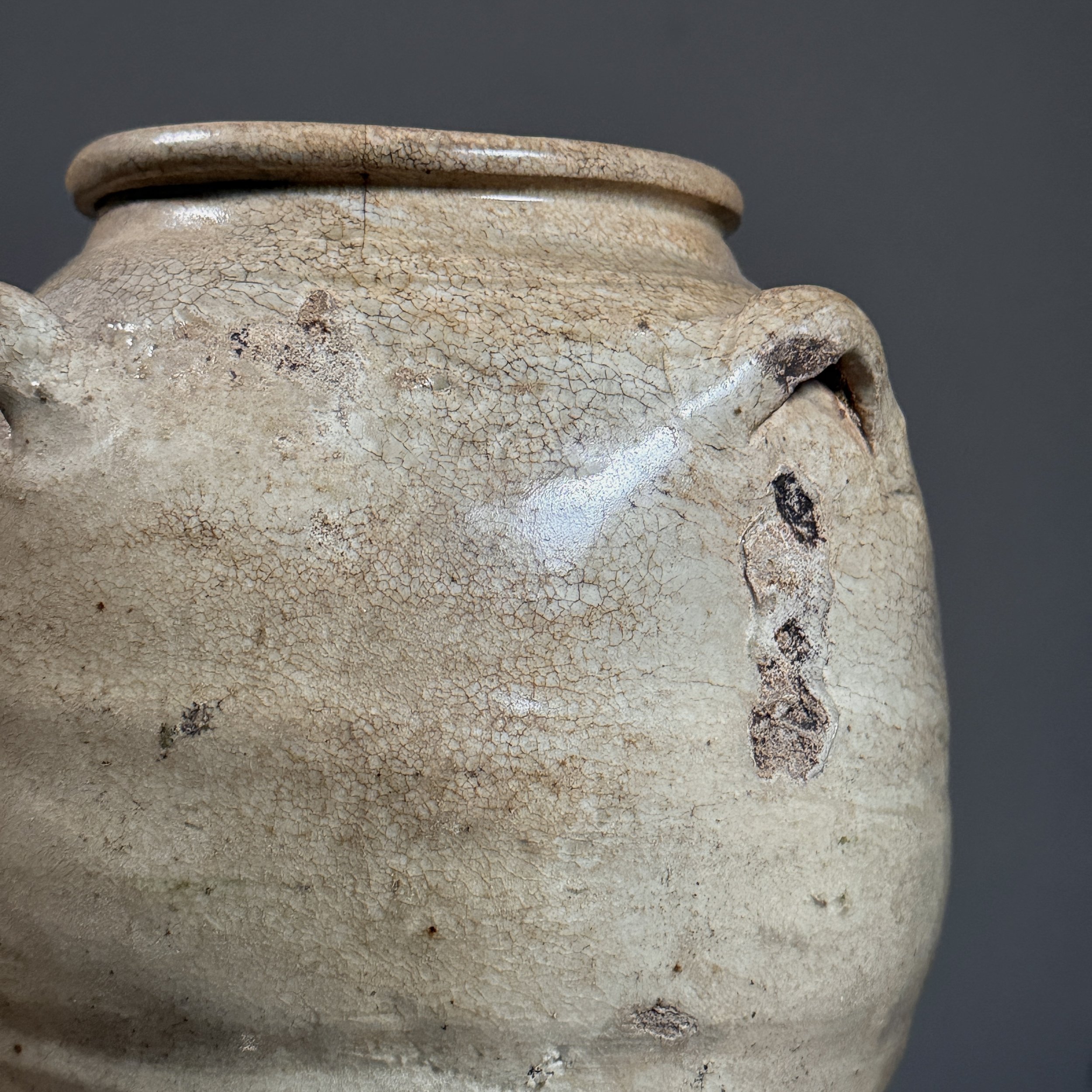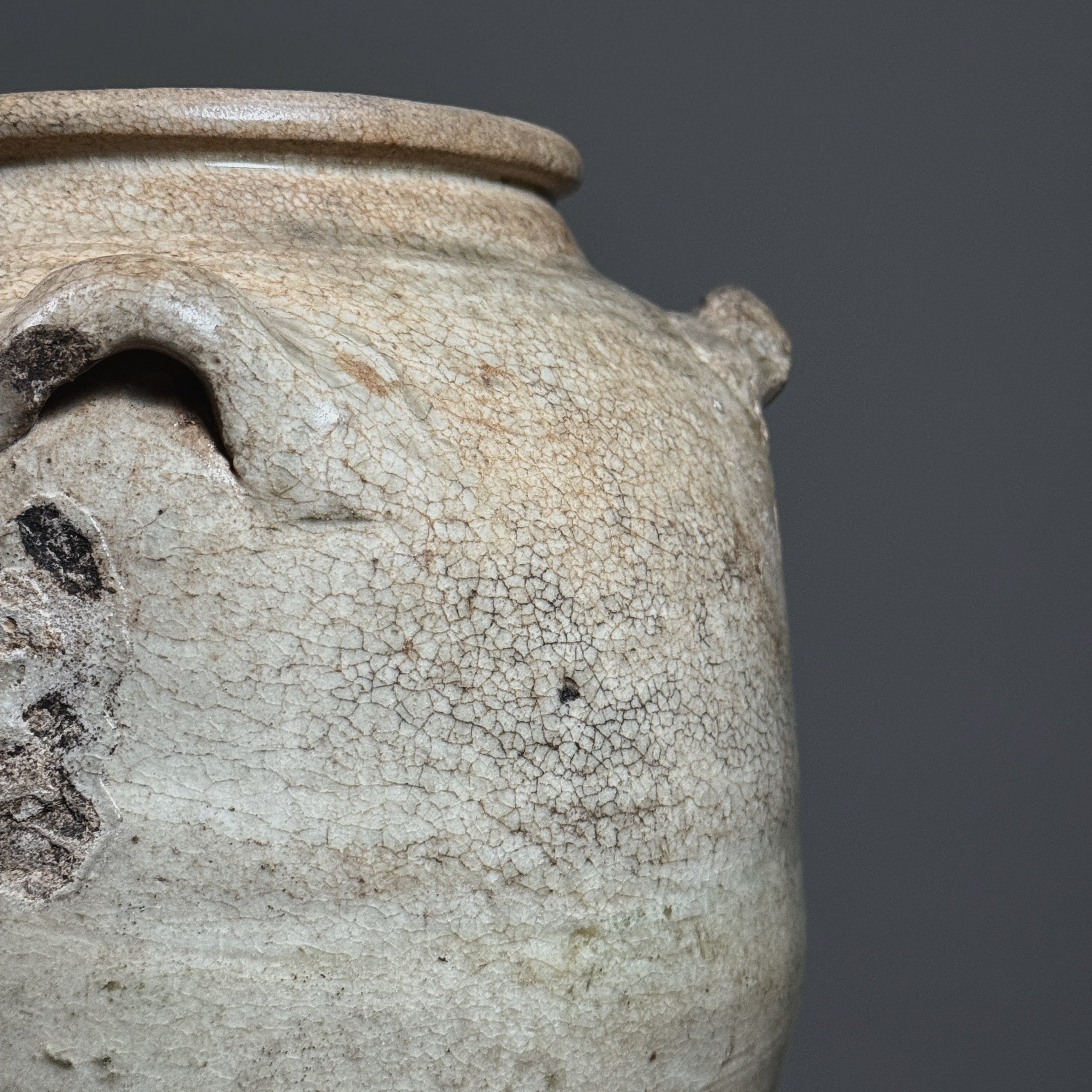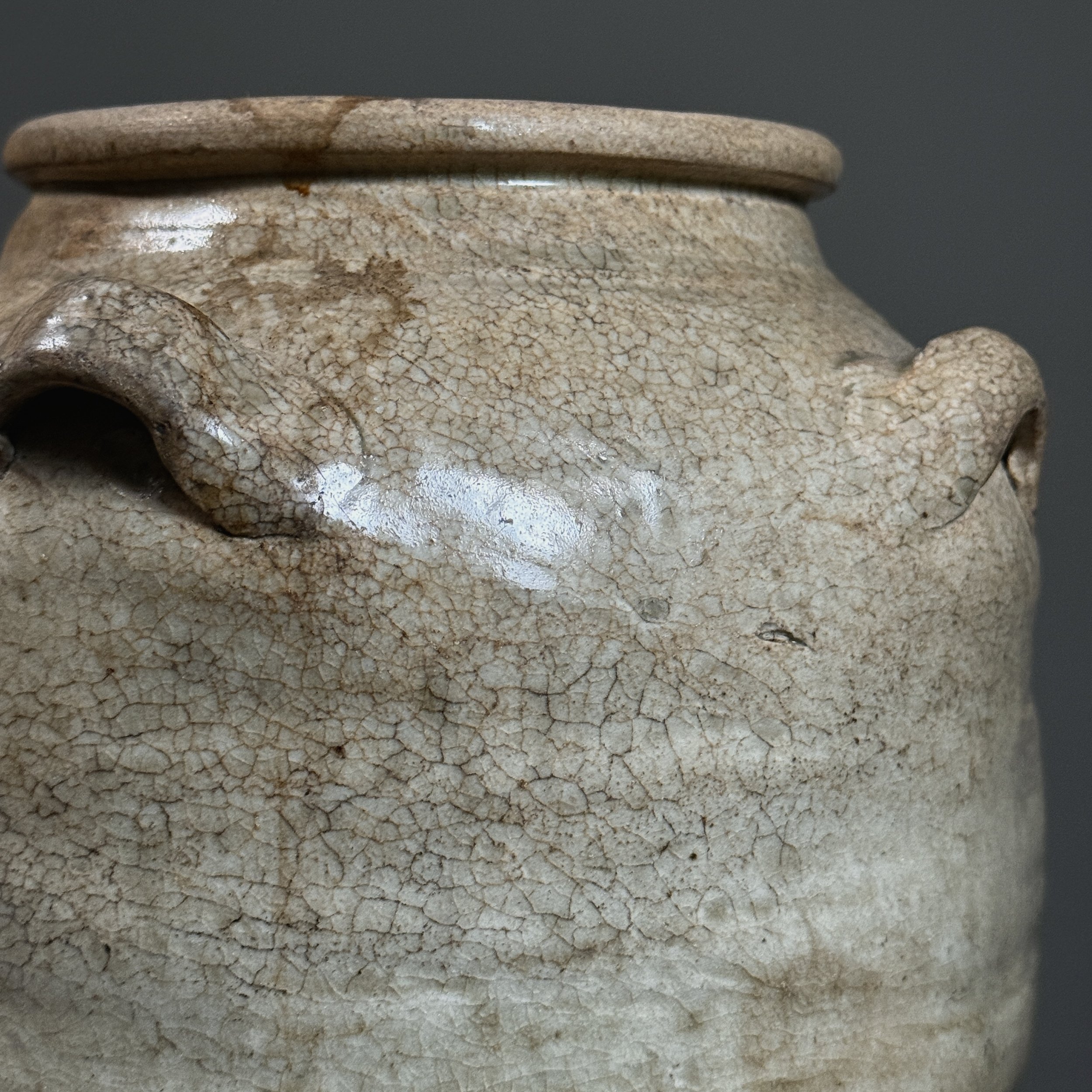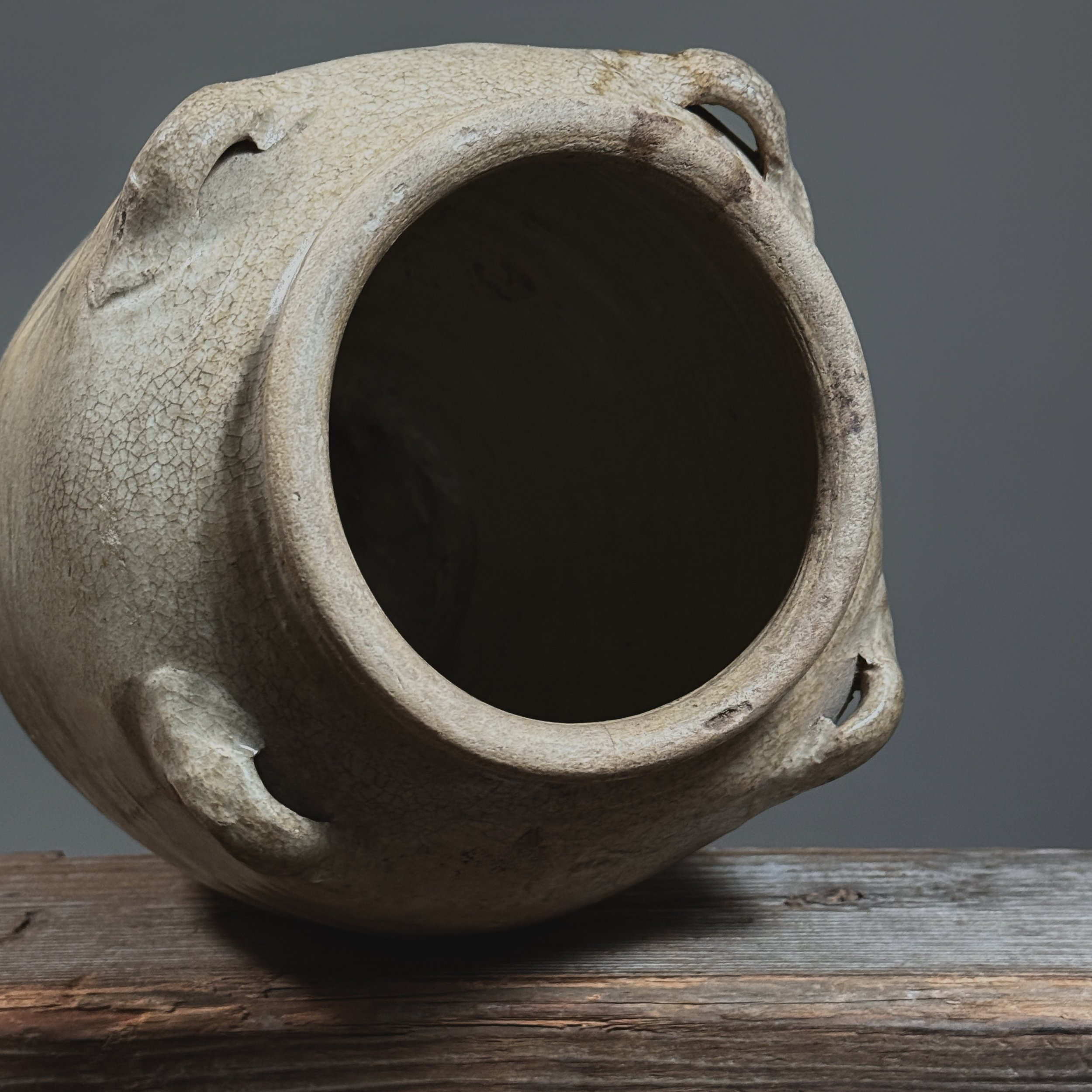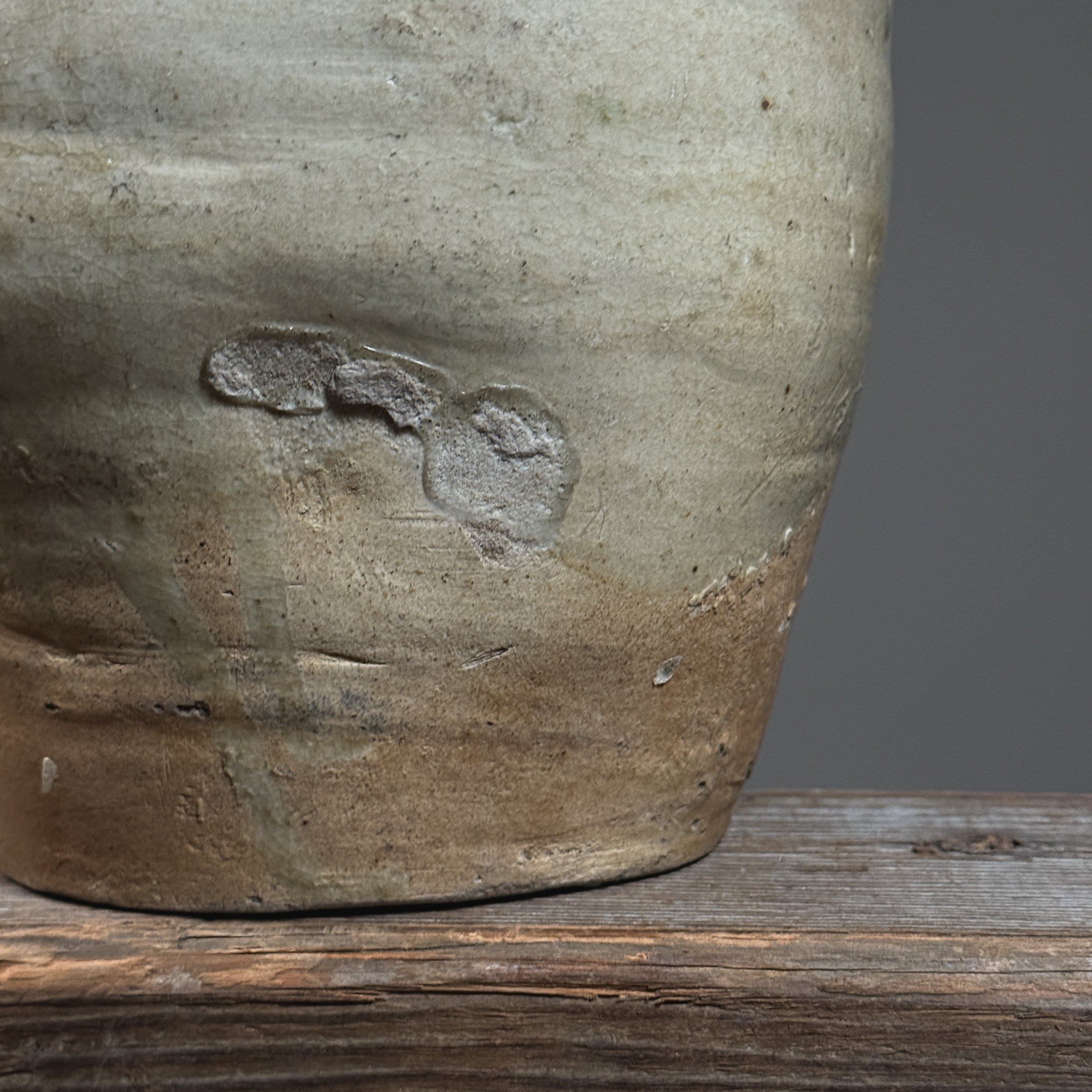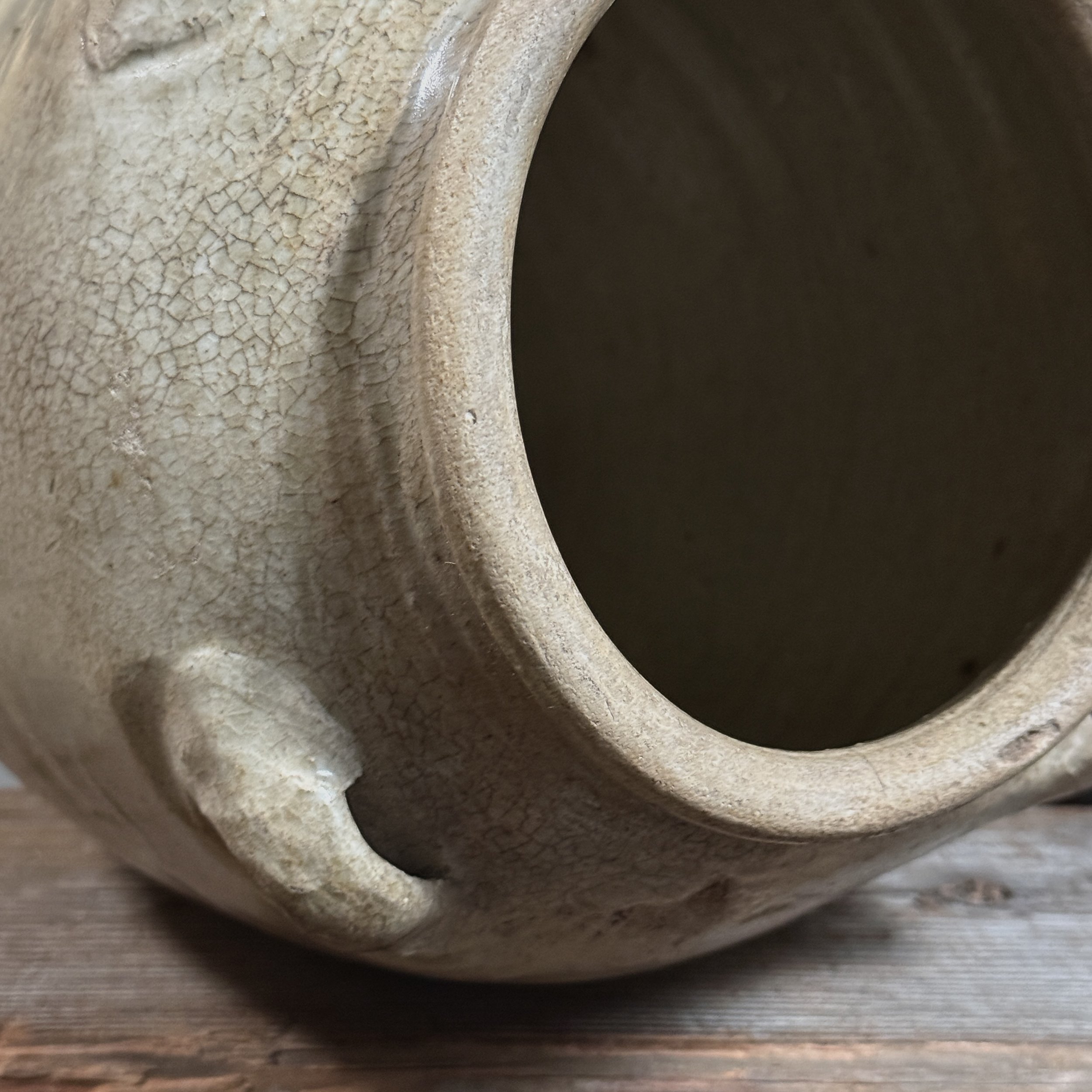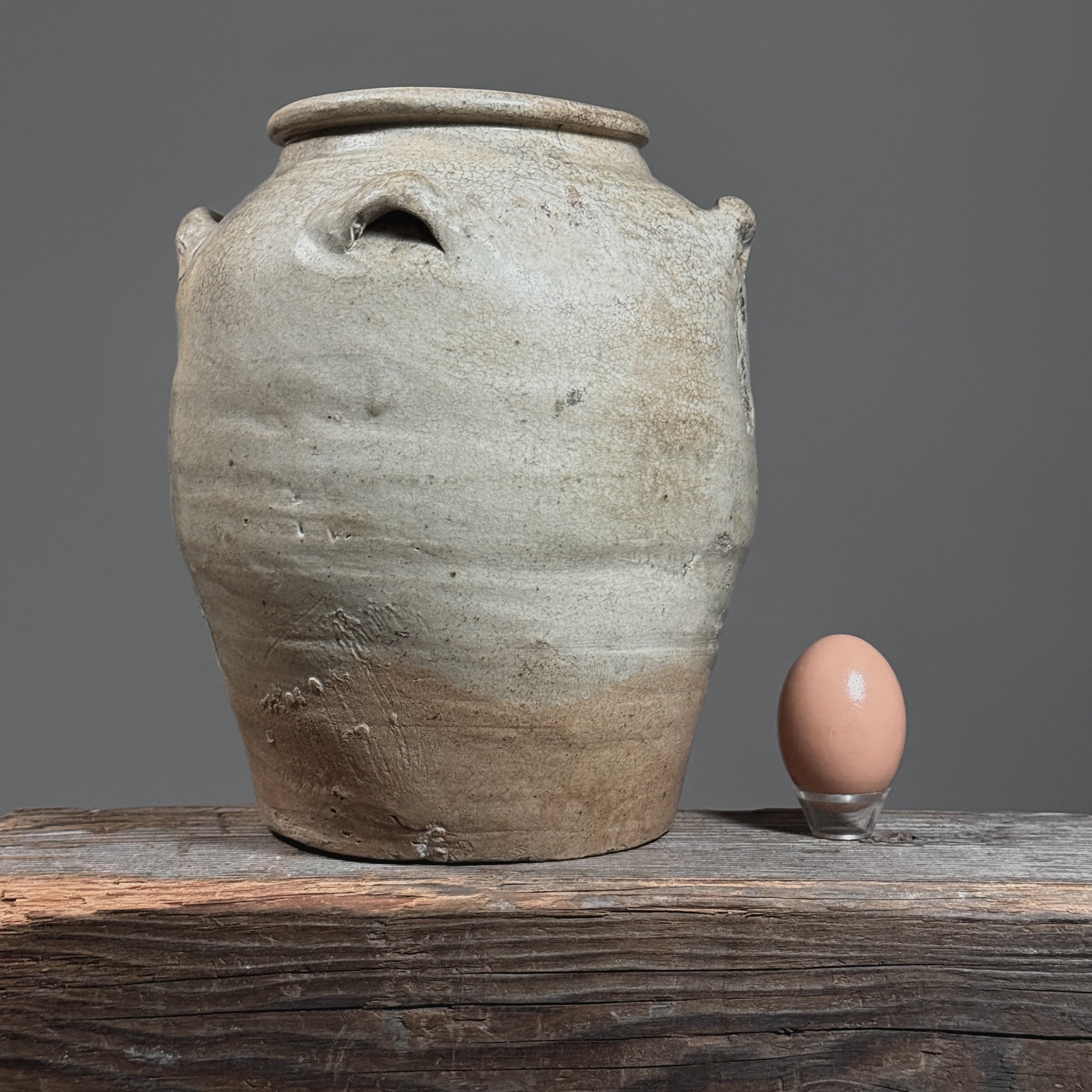 Image 1 of 10
Image 1 of 10

 Image 2 of 10
Image 2 of 10

 Image 3 of 10
Image 3 of 10

 Image 4 of 10
Image 4 of 10

 Image 5 of 10
Image 5 of 10

 Image 6 of 10
Image 6 of 10

 Image 7 of 10
Image 7 of 10

 Image 8 of 10
Image 8 of 10

 Image 9 of 10
Image 9 of 10

 Image 10 of 10
Image 10 of 10











Antique Mangaian Ceremonial Adze with Stand
Antique Mangaian Ceremonial Adze with Stand. Intricate hand carved basalt wood ceremonial post. The post itself is an elaborate square sectioned hollowed out turret with varying geometric and ‘double K’ shapes carved along the surface. The top is an intricate and traditional wrap of sennit. The shaft is independent of the stand (two separate pieces). Doesn’t appear to have had the stone blade which most likely means it was used a ceremonial adze. In good condition with wear and cracks at the base consistent with age. Please refer to the photos for details.
Size: 30”H x 8.5 x 8.5
Adzes with finely decorated shafts and intricate lashings, from the island of Mangaia in the Southern Cook Islands, are distinct to those found anywhere else in the Pacific. Some decorated adzes with shafts that can be manoeuvred with one hand were used as weapons as well as objects of art that marked social distinction. Other adzes with larger shafts and more elaborate designs were more ceremonial. The unique features of these Mangaian adzes are the finely polished adze heads, the intricate ‘triple-triangle pattern’ lashing and the detailed carved pedestal like shafts.
Significance
Adzes were prized not only as tools but as material property of wealth. An adze maker is a ta’unga (expert) who enjoyed a position of social and economic importance. His work is sought after and is paid in food and cloth for his services and he could buy protection with his skills. With a collection of adzes the conquered could buy life and protection from a powerful chief.
The carved Mangaian adzes were made in several styles based onsize and form. Pedestal adzes, know as ruatangaeo, such as this one are said to be descended from or related to carved deities. There are various names and meanings associated with the holes of the adze. One account, of which the name of this type of adzes derives from, refers to pedestal adzes as ruatangaeo or kingfisher’s nests, from the holes on the haft. Ruatangaeo adzes, which were beautifully carved and ornamented with feathers, were regarded as inferior gods or objects of divination. It was believed that when the holes were plugged it had an effect of stilling storms and protecting fishermen from their fury.
Antique Mangaian Ceremonial Adze with Stand. Intricate hand carved basalt wood ceremonial post. The post itself is an elaborate square sectioned hollowed out turret with varying geometric and ‘double K’ shapes carved along the surface. The top is an intricate and traditional wrap of sennit. The shaft is independent of the stand (two separate pieces). Doesn’t appear to have had the stone blade which most likely means it was used a ceremonial adze. In good condition with wear and cracks at the base consistent with age. Please refer to the photos for details.
Size: 30”H x 8.5 x 8.5
Adzes with finely decorated shafts and intricate lashings, from the island of Mangaia in the Southern Cook Islands, are distinct to those found anywhere else in the Pacific. Some decorated adzes with shafts that can be manoeuvred with one hand were used as weapons as well as objects of art that marked social distinction. Other adzes with larger shafts and more elaborate designs were more ceremonial. The unique features of these Mangaian adzes are the finely polished adze heads, the intricate ‘triple-triangle pattern’ lashing and the detailed carved pedestal like shafts.
Significance
Adzes were prized not only as tools but as material property of wealth. An adze maker is a ta’unga (expert) who enjoyed a position of social and economic importance. His work is sought after and is paid in food and cloth for his services and he could buy protection with his skills. With a collection of adzes the conquered could buy life and protection from a powerful chief.
The carved Mangaian adzes were made in several styles based onsize and form. Pedestal adzes, know as ruatangaeo, such as this one are said to be descended from or related to carved deities. There are various names and meanings associated with the holes of the adze. One account, of which the name of this type of adzes derives from, refers to pedestal adzes as ruatangaeo or kingfisher’s nests, from the holes on the haft. Ruatangaeo adzes, which were beautifully carved and ornamented with feathers, were regarded as inferior gods or objects of divination. It was believed that when the holes were plugged it had an effect of stilling storms and protecting fishermen from their fury.

